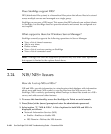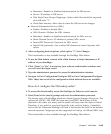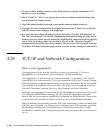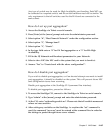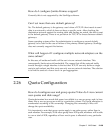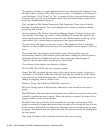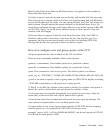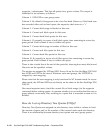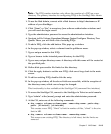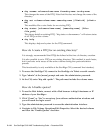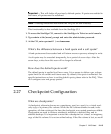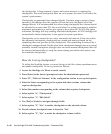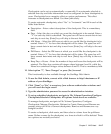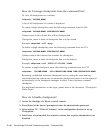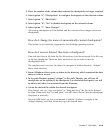
2-112 Sun StorEdge 5310 NAS Troubleshooting Guide • December 2004
repquota /volumename: This lists all quotas for a given volume. The output is
formatted to ten columns, as follows:
Column 1: UID/GID or user group name.
Column 2: By default, this appears to be a two line dash. However, if the listed user
has exceeded either soft or hard quota, the respective dash turns to a "+"
Column 3: Current disk usage in blocks for this user.
Column 4: Current soft block quota for this user.
Column 5: Current hard block quota for this user.
Column 6: If currently in excess of soft block quota, time remaining in seven day
grace period. Field is blank if user is within soft quota.
Column 7: Current disk usage in number of files for this user.
Column 8: Current soft files quota for this user.
Column 9: Current hard files quota for this user.
Column 10: If currently in excess of soft files quota, time remaining in seven day
grace period. Field is blank if user is within soft quota.
There is also a totals line at the end of the quota list, showing how many blocks and
files exist on the specified volume.
The quotas are assigned by UID and GID. Every file on the Sun StorEdge 5310 NAS
has a GID and UID. In the case of Windows users and groups, the UID/GID is
assigned by user mapping.
Please note that the user mapping is only functional in NT domain mode. In secure
share mode, the UID and GID are set directly on the share in the Sun StorEdge 5310
NAS UI.
One more important note, check the current file or block usage (via the repquota
command) before setting quotas. A common mistake is to not realize that the user or
group already owns many files, resulting in a quota that is exceeded as soon as it is
defined.
How do I set up Directory Tree Quotas (DTQs)?
Directory Tree Quotas are assigned on sub-directory trees within a volume to limit
the amount of space and/or the number of files created under each sub-directory.
There is no relationship between directory tree quotas and user/group quotas.



